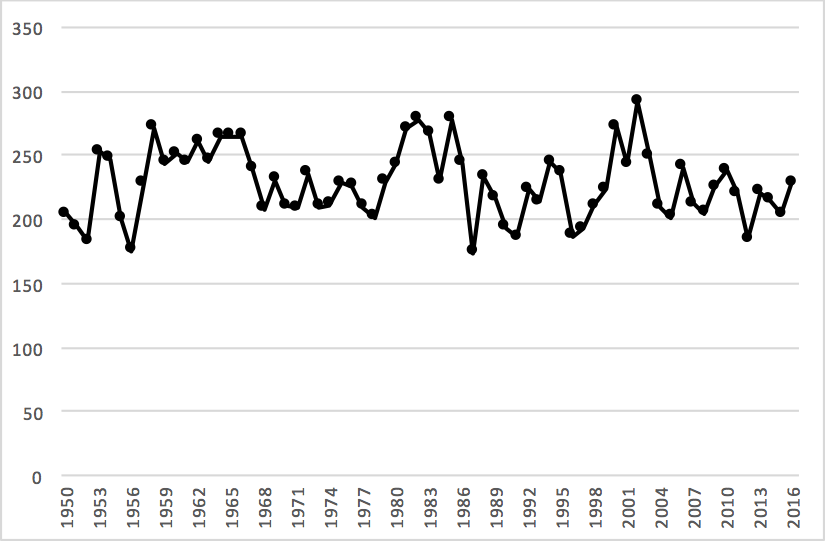Yesterday, I looked at the amount of rushing yards generated by “quarterbacks” in each year since 1950. I put that term in quotes because what I did was calculated the amount of rushing yards by passers, weighted by the number of passing yards by each passer. So the amount of rushing yards by a passer with 5000 passing yards counts for 50 times as much (when determining how much rushing was generated by “quarterbacks” that season) as a passer with 100 passing yards.
What if we do the same thing but with receiving yards generated by “running backs”? The peak year was 2002, when there were a lot of players who both were their team’s workhorse back and were great receivers. Priest Holmes rushed for 1,615 yards and had 672 receiving yards, Charlie Garner was at 962/941, Tiki Barber had 1387/597, and LaDainian Tomlinson was at 1683/489. On average, the league “running backs” produced an average 292 receiving yards. That may not mean much in the abstract, but think of it this way: if each team gave all of its rushing yards to one player, that player would have averaged 292 receiving yards, too. Using the methodology from yesterday, here are the results if we replace passing yards with rushing yards, and rushing yards with receiving yards:

An example of a down year would be the 2012 season. The top seven leaders in rushing were Adrian Peterson (217 receiving yards), Alfred Morris (77), Marshawn Lynch (196), Jamaal Charles (236), Doug Martin (472), Arian Foster (217), and Stevan Ridley (51).
I don’t really know what this tells us, but I was curious to run the numbers. I’m a little surprised there isn’t a wider variation across years, or any trend in any direction. At its core, this tells us how much the best rushers gain receiving yards, and that’s pretty stable across NFL history.
